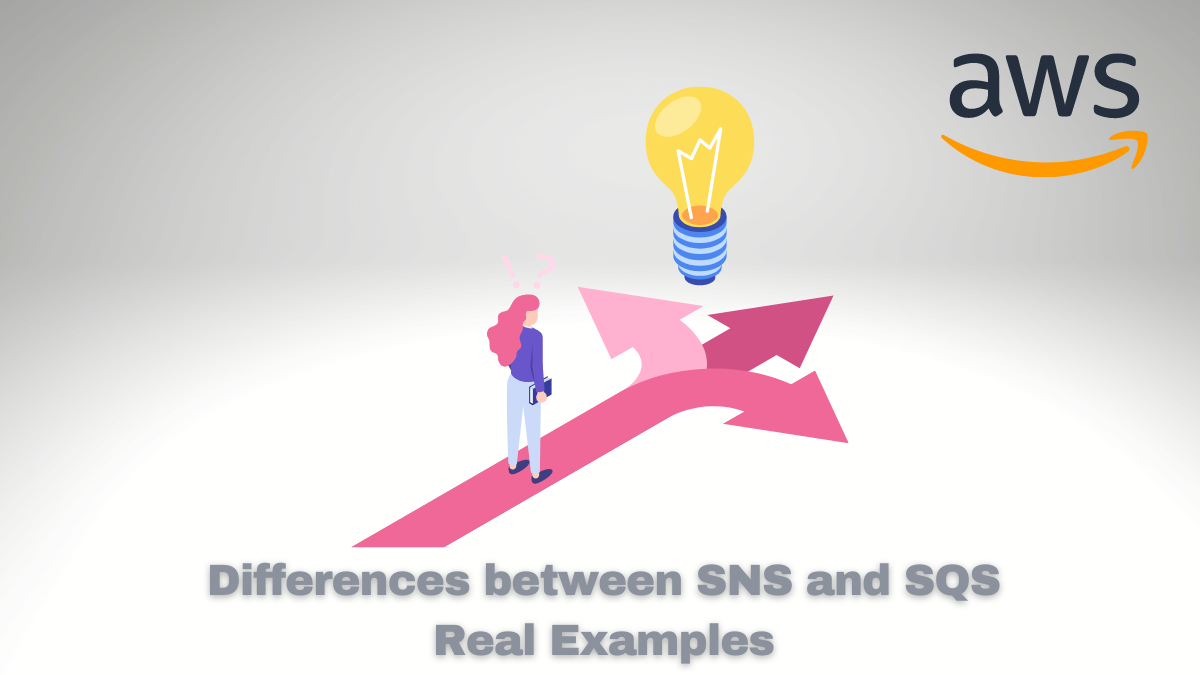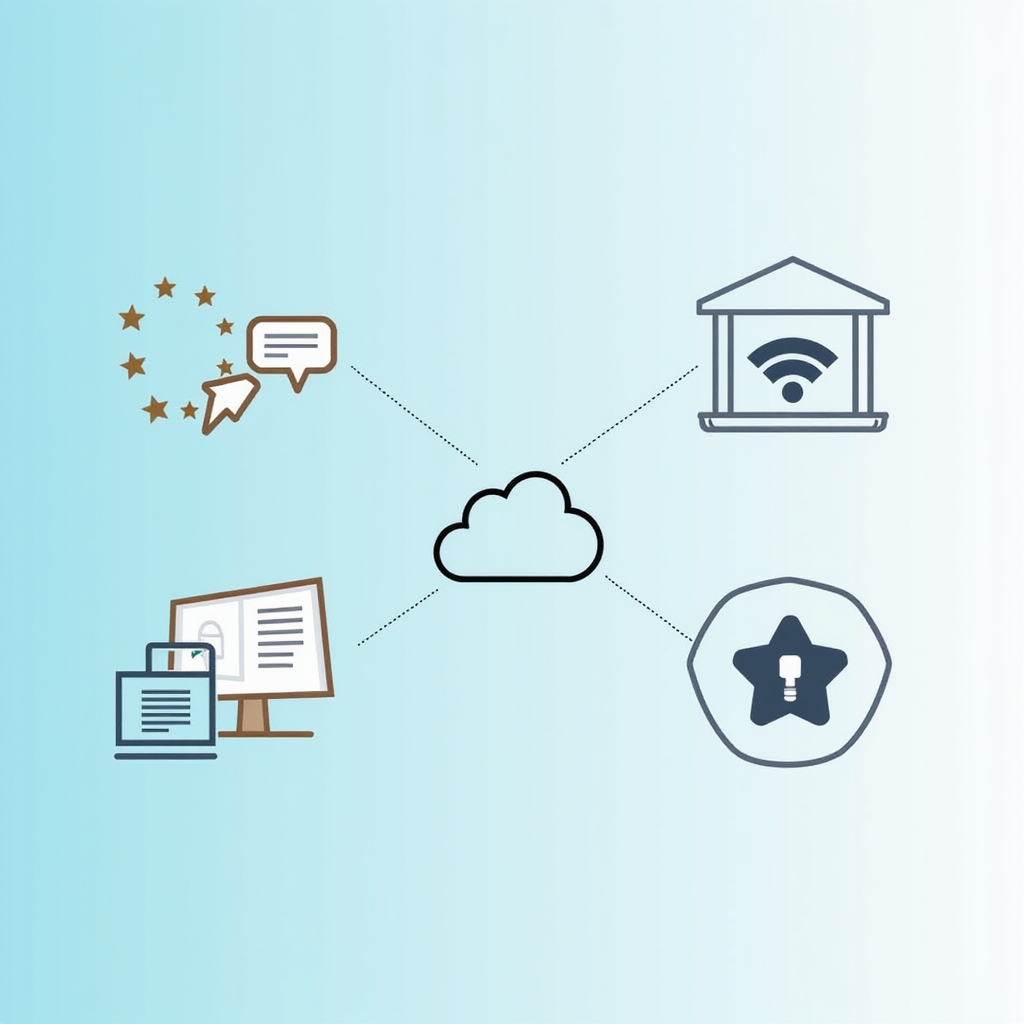AWS SNS vs SQS: A Real-World Project Analysis

Once upon a time, a fast-growing e-commerce company aimed to create a seamless user experience for its customers. As their business expanded, they realized the need for an efficient messaging system to ensure smooth communication between different application components. In this quest, they stumbled upon two popular AWS services – Simple Notification Service (SNS) and Simple Queue Service (SQS). Let’s explore the differences between AWS SNS vs SQS and analyze how these services are applied in real-life situations.
Understanding AWS SNS and SQS
AWS SNS is a fully managed pub-sub messaging service that allows the simultaneous sending of messages from an application or service to multiple subscribers. Using topics enables one-to-many communication where a single message can reach multiple recipients.
On the other hand, AWS SQS is a fully managed message queuing service that enables decoupling components within distributed applications. It facilitates one-to-one communication, temporarily storing messages in queues before consumers process them.
AWS SNS and SQS:
| Feature | AWS SNS | AWS SQS |
|---|---|---|
| Type of service | Messaging | Queueing |
| Messaging pattern | Pub/sub | Point-to-point |
| Durability | Messages are stored in durable queues | Messages are not stored in durable queues |
| Persistence | Messages are persisted for up to 14 days | Messages are not persisted |
| Scalability | Highly scalable | Highly scalable |
| Cost | Pay per message | Pay per request |
| Use cases | Real-time notifications, event-driven applications, and serverless computing | Message processing, batch processing, and distributed systems |
5 Real Business Applications
Here are five real-world scenarios to help understand when either SNS or SQS might be more suitable:
- Order Processing: For an e-commerce platform, processing orders quickly and efficiently is vital. An efficient approach would be using SQS to queue order events as they come in so that order processing workers can pick them up asynchronously without putting too much pressure on individual resources.
- Payment Notifications: When users make payments through various channels such as credit cards or mobile wallets, it’s crucial to notify all relevant parties like accounting systems and email notifications systems simultaneously about the transaction details. In this case, SNS could simultaneously send payment notifications to multiple subscribers.
- Inventory Management: Tracking inventory levels requires monitoring product stock across warehouses and locations. Instead of polling for updates constantly, using SNS could allow inventory management systems to receive notifications about stock level changes through subscriptions instantly.
- Delayed Task Execution: Many tasks don’t need to be executed immediately and can wait until there’s available processing power. For example, generating reports or performing periodic cleanup operations can be pushed into SQS queues and processed later by worker instances when resources are available.
- System Alerts: In case of system failures or performance degradation, notifying multiple teams like development, operations, and management is critical for a swift resolution. SNS is ideal for broadcasting system alerts to different teams via email or other communication channels.
Examples
SQS in Action: The e-commerce company used SQS to manage order processing efficiently without overloading its resources during peak sales periods. When a customer placed an order, it was enqueued in an SQS queue and later picked up by a worker responsible for processing it.
SNS in Action: To ensure timely notifications about payment transactions, the company utilized SNS topics so that accounting systems and email notification services could subscribe to these topics and receive payment details simultaneously as soon as a transaction occurred.
AWS SQS and SNS: A Performance Comparison
After understanding the key differences between AWS Simple Queue Service (SQS) and Simple Notification Service (SNS), it’s essential to consider their performance aspects. This will help you decide on which service to choose based on your application requirements. In this section, we’ll dive into a performance comparison of AWS SQS and SNS.
Latency
SQS: Since SQS is designed for asynchronous message processing, its latency might be slightly higher compared to SNS. This is because messages are stored in queues before being processed by consumers, resulting in a slight delay. However, this delay can be beneficial when handling high-throughput systems that require load balancing or decoupling components.
SNS: With its pub-sub model, SNS delivers messages directly to subscribers in near real-time. As a result, it generally has lower latency than SQS. This makes it suitable for scenarios requiring fast notifications across multiple recipients.
AWS SNS vs SQS: Scalability
SQS: One of the key advantages of using SQS is its ability to scale automatically based on demand. When the number of incoming messages increases, more worker instances can consume from the queue simultaneously without affecting other components of your application or any manual intervention required.
SNS: Given its pub-sub messaging architecture, SNS is equally capable of scaling horizontally as it distributes messages among different subscribers via topics, effectively managing high throughput scenarios.
Attention all cloud-minded professionals!
Are you looking to advance your career in cloud computing? If so, then you need to learn AWS. AWS is the world’s leading cloud platform and will only become more critical in the future.
That’s why we’re excited to announce our free AWS Learning Kit! This kit contains everything you need to learn AWS, including:
- 20 Mind Maps that provide a visual overview of crucial AWS concepts
- 260 Questions with Answers that will test your knowledge
The AWS Learning Kit is the perfect resource for anyone who wants to learn AWS quickly and easily. So what are you waiting for? Download the kit today!

AWS Learning Kit – VPC Mind Map
Here are just a few of the benefits of learning AWS:
- Increased job opportunities: AWS is in high demand, and many job opportunities are available for AWS-certified professionals.
- Higher salaries: AWS-certified professionals earn higher salaries than non-certified professionals.
- Improved skills: Learning AWS will help you develop valuable skills that are in demand in the cloud computing industry.
- Greater flexibility: AWS allows you to work from anywhere in the world.
If you’re serious about your cloud computing career, you need to learn AWS. The AWS Learning Kit is the perfect resource to help you get started.
Download the AWS Learning Kit today and start your journey to a cloud-powered future!
AWS SNS vs SQS: Message Retention & Reliability
SQS: Messages in an SQS queue are retained for up to 14 days by default (configurable), ensuring no message is lost even if consumers experience temporary failures or downtime. Additionally, with features like dead-letter queues and visibility timeouts provided by AWS SQs standard queues, you can achieve at least one delivery guarantee. In contrast, FIFO queues provide exactly one delivery guarantee through a deduplication process enabled by message group ids and deduplication ids.
SNS: SNS does not store messages for long periods. Instead, it makes multiple attempts to deliver messages to subscribers quickly (configurable). If a message delivery fails after all retry attempts have been exhausted, the message is considered lost. In this aspect, SQS provides more excellent reliability than SNS regarding ensuring message delivery.
Use Case Complexity
SQS: While SQS is easy to set up and use for simple applications, implementing complex processing workflows can involve additional overhead in managing worker instances and adding custom logic for prioritizing or filtering messages.
SNS: With its pub-sub model and support for multiple subscription types like email, SMS, Lambda functions, etc., SNS allows more flexibility in designing complex messaging architectures with ease.
AWS SNS vs SQS: Cost
AWS SQS and SNS follow the pay-as-you-go pricing model, meaning you only pay for what you use. However, their pricing structures differ slightly:
SQS: You are charged based on the number of requests made (e.g., SendMessage, ReceiveMessage) and charges for additional features like data transfer or using FIFO queues.
SNS: Pricing mainly depends on the number of notifications published and delivered successfully (including retries) and other factors such as notification type (email/SMS/Lambda).
When comparing costs between SQs & SNS, one should factor in aspects like message size, number of recipients/messages delivered per unit time, etc.
Conclusion
In summary:
| AWS Service | Communication Type | Use Case |
|---|---|---|
| AWS SNS | One-to-many | Notifying multiple subscribers (e.g., payment notifications) |
| AWS SQS | One-to-one | Decoupling components & asynchronous processing (e.g., order processing) |
In the e-commerce project scenario, we just analyzed, while dealing with payment notifications that needed to reach multiple recipients simultaneously – like accounting systems and email notification services – SNS was chosen for its one-to-many communication capabilities. In contrast, when it came down to efficient order processing without overloading resources during peak times, SQS was employed thanks to its queuing nature and asynchronous message processing.
By understanding when and where to use AWS SNS vs SQS, you can optimize communication within your application, ensuring scalability and reliability. With these insights, conquer the world of AWS messaging services!
By comparing AWS SQS vs SNS from a performance perspective, we can conclude that:
- For scenarios requiring low latency messaging across multiple recipients, go with AWS SNS, as it delivers messages directly in nearly real-time.
- When your primary concern is scalability & reliability of retaining & delivering messages to consumers, AWS SQs might be a better choice.
- Consider the complexity & cost aspects carefully while choosing between these AWS messaging services to strike a perfect balance between performance and cost efficiency.
Ultimately, the right choice between AWS SQS and SNS will depend on your application’s requirements and messaging goals. By considering these factors, you can make an informed decision that will ensure success in your AWS adventures.




Comments